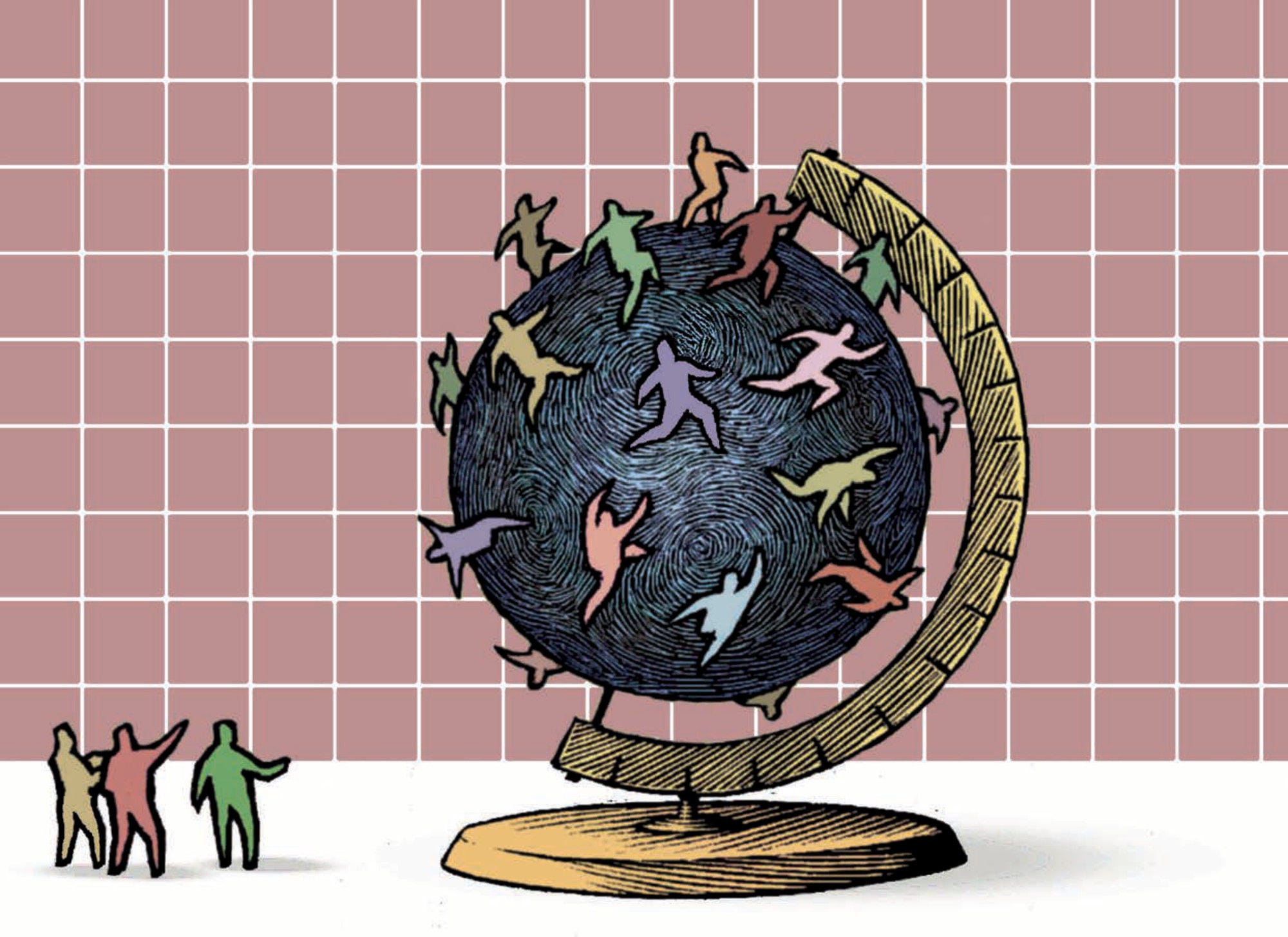In 2017, net long-term immigration increased and reached 282 000, +13% compared to 2016. Net immigration of EU citizens fell by 33 000 to 100 000, just over half of the total for 2015 (184 000). Non-EU net immigration was 229 000, considerably higher than the year before (176 000), of which 151 000 was attributed to Asian net migration. The estimate of immigration for EU citizens was 239 000, similar to the 2016 estimate of 250 000. Immigration of non-EU citizens saw a significant increase from 265 000 to 313 000.
In 2017, the United Kingdom received 342 000 new immigrants on a long-term or permanent basis (including changes of status and free mobility), ‑2.5% compared to 2016. This figure comprises 53.7% immigrants benefitting from free mobility, 9.1% labour migrants, 23.1% family members (including accompanying family) and 5.5% humanitarian migrants.
Around 306 000 permits were issued to tertiary-level international students and 91 000 to temporary and seasonal labour migrants (excluding intra-EU migration). In addition, 60 000 intra-EU postings were recorded in 2017, an increase of 4% compared to 2016. These posted workers were generally on short-term contracts.
China, Romania and India were the top three nationalities of newcomers in 2017. Among the top 15 countries of origin, China registered the strongest increase (23 000) and France the largest decrease (‑11 000) in flows to the United Kingdom compared to the previous year.
In 2018, the number of first asylum applicants increased by 11.9% to reach around 37 000. The majority of applicants come from Iran (4 000), Iraq (3 600) and Pakistan (2 600). The largest increase since 2017 concerned nationals of Eritrea (1 100) and the largest decrease nationals of Pakistan (‑600). Of the 29 000 decisions taken in 2018, 34.9% were positive.
Emigration of British people to OECD countries increased by 0.4% to 131 000. Approximately 16.0% of this group migrated to Spain, 13.3% to Australia and 8.7% to Germany.
The Tier 2 visa route (skilled workers) has had an annual cap of 20 700 people since 2011. Before December 2017, this cap had been reached only once. However, it was reached every month from January to May 2018. In June 2018, the government announced that doctors and nurses would be excluded from the cap.
In light of the anticipated shortage of agricultural workers following Brexit, a two-year Seasonal Workers pilot scheme was announced by the Home Secretary and Environment Secretary in September 2018. Up to 2 500 workers may be brought annually to work for UK farmers for up to six months in seasonal agricultural work.
In December 2018, the UK government published a White Paper on the “UK's future skills-based immigration system”. The future system will apply to EU and non-EU citizens alike. Current rules will continue to apply during an Implementation Period, planned to run through 2020. The White Paper largely accepted the recommendations from the Migration Advisory Committee (MAC) in September 2018 regarding changes to the student, mobility and work schemes. The Resident Labour Market test will be eliminated for the highest skilled workers. There will be no cap on the skilled work route, which will in future encompass medium-skill workers. A longer post-study extension period to stay and seek employment and sponsorship will be provided – six months for Bachelor’s level (up from two) and Master’s level graduates (up from four), and 12 months for PhD level graduates (today under a separate 12-month scheme). The White Paper also proposes a transitional time-limited route for temporary short-term workers, working a maximum of 12 months followed by a 12-month “cooling off” period outside the UK. Nationals of specified countries only will be eligible to participate; the scheme will be reviewed in 2025.
In addition, the government has also introduced the EU Settlement Scheme for EEA nationals currently in the UK. EU citizens must obtain specific, individual permission to stay on in the UK. Residents of more than five years can obtain settlement while more recent migrants can obtain permits to stay until they are eligible to apply for settlement.
In July 2018, the UK created a new form of leave for children relocated to the UK under section 67 of the Immigration Act 2016 (the Dubs amendment), who do not qualify for either refugee status or humanitarian protection. They may receive a residence permit, valid for five years, after which they may apply for settlement. The number of children to be transferred under section 67 remains at 480.
In February 2019, the government published the Integrated Communities Action Plan, which sets out measures intended to tackle the causes of poor integration and build economically and socially stronger, more integrated communities. The Action plan includes some measures specifically for recent migrants, including refugees, and recognises that integration is a ‘two-way street’ involving both recent migrants and settled communities. The Action Plan applies primarily to England, although some measures are UK-wide.
For further information:
www.gov.uk/government/organisations/home-office
www.ons.gov.uk
